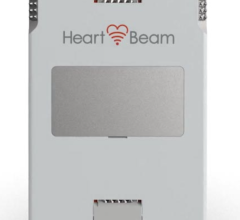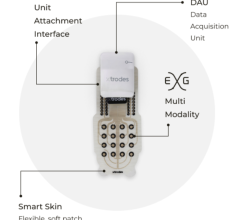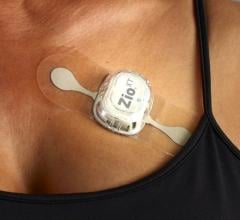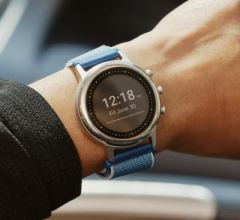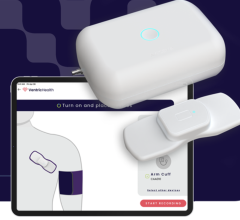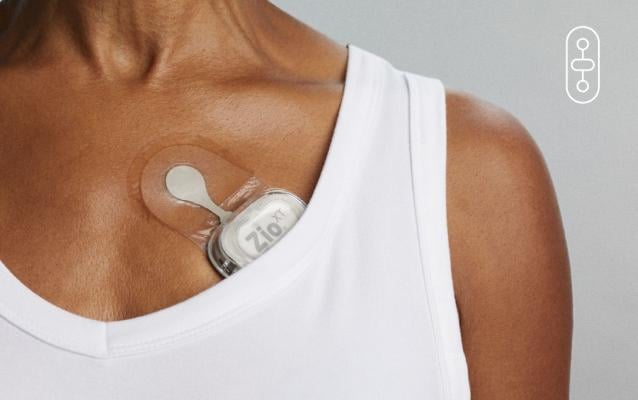
Zio by iRhythm
February 28, 2022 – iRhythm Technologies, Inc., a leading digital healthcare solutions company focused on the advancement of cardiac care, announced that the results of the KP-Rhythm2 study, titled “Diagnostic yield, outcomes and resource utilization with different ambulatory electrocardiographic monitoring strategies,” were published in the American Journal of Cardiology (AJC). While earlier peer-reviewed studies have found Zio XT to be better than Holter and event monitors in the detection of arrhythmias, the KP-Rhythm2 study, led by Kaiser Permanente and supported by a research grant from iRhythm Technologies, Inc., is the first study to address specifically Zio XT patch vs. a 30-day event monitor yielding similar diagnostic yield for atrial fibrillation (AF)/ atrial flutter (AFL) ≥30 seconds in a general population of adults without known prior AF/AFL.
“It’s been demonstrated that Holter monitors often result in repeat testing, longer time to diagnosis, increased costs of healthcare, and a delay to clinical intervention,” said iRhythm CEO Quentin Blackford. “This latest clinical research further validates that monitoring with Zio by iRhythm leads to better diagnostic yield and aids in more accurate diagnoses.”
The KP-Rhythm2 study examined the efficacy of Zio XT, Holter monitors, and event monitors. It was designed to assess diagnostic yield, outcomes, and resource utilization by monitoring modality in individuals without previously documented AF or AFL. Zio XT was associated with significantly higher documentation1 of AF/AFL -related supraventricular tachycardias and non-sustained ventricular tachycardia than both 24-hour Holter and 30-day event monitoring.
In addition, the results of the Brady-TAVR study, titled “Bradyarrhythmias detected by extended rhythm recording in patients undergoing transcatheter aortic valve replacement,” were published in Heart Rhythm Journal in November 2021. The study aimed to determine the prevalence of bradyarrhythmias among patients undergoing transcatheter aortic valve replacement (TAVR) and whether pre- and post-TAVR extended rhythm monitoring with Zio XT would aid in the prediction of conduction disturbances and permanent pacemaker (PPM) implantation risk. Guidelines from the Journal of the American College of Cardiology (JACC) recommend that ECG monitoring be conducted pre- and post- TAVR, given the clinical importance of monitoring patients undergoing this procedure. The study found that bradyarrhythmias can be detected with 14-day cardiac monitoring through Zio XT before and after TAVR.
“Bradyarrhythmias are a common occurrence post-TAVR and can create major complications in patients who have undergone the procedure,'' said Khaldoun G. Tarakji, MD, Principal Investigator for the Brady-TAVR study at Cleveland Clinic's Heart, Vascular & Thoracic Institute. “Fortunately, monitoring has proven effective both pre- and post-procedure in quickly detecting these complications.”
Read the KP-Rhythm2 study in the American Journal of Cardiology here and the Brady-TAVR study in Heart Rhythm Journal here.
About the KP-Rhythm2 Study
The study compared diagnostic yield, outcomes, and resource utilization by arrhythmia monitoring strategy in 330 case matched adults without previously documented AF/AFL who received ambulatory electrocardiographic monitoring by 14-day Zio XT (patch-based continuous monitor), 24-hour Holter, or 30-day event monitor (external loop recorder) between October 2011 and May 2014. Prolonged monitoring with 14-day Zio XT patch identified statistically more new AF/AFL compared to Holter. Zio XT also identified numerically more new AF/AFL compared to 30-day event, although differences were not statistically significant (p = 0.07). Additionally, for indications besides suspected AF/AFL, a potential concern about using patch-based ambulatory electrocardiographic (AECG) technology compared with event monitors is the delay in obtaining critical arrhythmia event information. Among matched patients, the study not only demonstrated no significant differences in adverse arrhythmia-related events across a broad range of indications, but importantly there were no safety issues identified due to the timing of data reporting when using Zio XT compared to event monitors or Holters.
About the Brady-TAVR Study
The clinical study was supported through the Cleveland Clinic Heart, Vascular and Thoracic Institute and iRhythm Technologies, Inc. Patients received an AECG patch for two weeks pre-, immediately post-, and two to three months post-TAVR. Results noted 10.1% of patients had left bundle branch block (BBB) on their AECG, a condition that developed in over 50% of those patients in the study following TAVR. Bradyarrhythmias occurred in 5.2%, 12.7%, and 7% of patients pre-, immediately post-, and two-three months post-TAVR, respectively. PPM implantation occurred in 12.5% of patients, of whom 9.4% underwent implantation during their index hospitalization and 3.1% required implantation post- discharge for indications other than heart block. Significant baseline predictors for the need for PPM included the presence of right BBB. Bradyarrhythmias detected by Zio XT did not predict the need for PPM at either the index hospitalization or the follow-up period.


 November 11, 2025
November 11, 2025 




